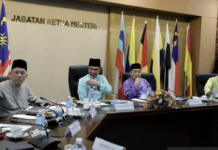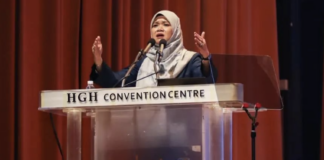PUTRAJAYA, June 10 — Technical issues and communication failure between the Operations Control Centre (OCC) and the hostler (driver) are among the causes that led to the collision between two Light Rail Transit (LRT) trains on the Kelana Jaya line on May 24, said Transport Minister Datuk Seri Dr Wee Ka Siong.
He said the findings were contained in the report of the Investigation Committee set up to probe into the collision which occurred between the Kampung Baru and KLCC stations. The report was presented to the Cabinet yesterday (June 9).
In sharing the contents of the report via a virtual media conference today, Wee said the incident involved the collision between train number 40 (Train 40), with no passengers on board, that had technical problems and train number 81 (Train 81) that had 213 passengers and had departed without getting accurate confirmation.
Explaining the sequence of events regarding the incident, Wee said Train 40 experienced technical problems at 6.26 pm on the day of the crash on May 24, involving one of the two Vehicle On-Board Communication (VOBC) systems.
According to him, when one of the VOBC failed to function and lost communication with the OCC, then the train had to be emptied of passengers at the next station and taken out of service for maintenance at the Lembah Subang depot via the Automatic Train Operation (ATO) control while the second VOBC was still functioning.
However, the second VOBC on Train 40 also failed to function at 8.13 pm while on its way to Lembah Subang and was stranded between the KLCC and Kampung Baru stations.
“The OCC could not control Train 40 when both its VOBC malfunctioned. As such, the hostler was ordered to manually drive Train 40 to go to the nearest station, namely Dang Wangi, in order to be reset into the ATO mode,” he said.
Wee said that investigations found that during the process of driving the train to be reset into the ATO mode, both the hostler and OCC officer (controller) had ignored certain critical standard operating procedures (SOP) and this inadvertently resulted in Train 40 being inadvertently being moved northbound to Gombak instead of southbound to the depot.
At the same time, he said Train 81 was being held back at the KLCC station and placed under the Manual Route Reservation (MRR) status, which is protection for Train 40 before it can be operated via ATO.
“However, Train 81 was released to depart the KLCC station heading towards the Kampung Baru station without getting an accurate confirmation that said Train 40 had been reset to ATO. This situation then led to the collision between Train 40 and Train 81,” he said.
Wee said the hostler’s action was unintentional because, at that time, the information regarding the track section number was insufficient, whereby periodic reporting to the OCC should have taken place.
He stressed that the objective of the investigation was to determine the actual situation and cause of the collision with the aim of preventing a recurrence as well as improving public transport services and not intended to prove the guilt or liability against any party.
Meanwhile, Transport Ministry secretary-general Datuk Isham Ishak, who led the Investigating Committee, said the findings revealed that the maintenance conducted by Prasarana was in order and according to the manuals.
He said there was no discrepancy or anomaly in the maintenance of the trains but the SOP was not completely adhered to as there should have been a checklist to avoid such incidents.
“The VOBC failure doesn’t happen every day, it seldom happens. But when it happens, there must be an SOP which everyone understands and follows on how to handle manual train,” he said.



















